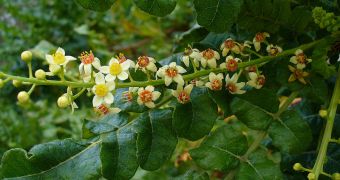Within roughly 15 years, frankincense production will decrease to half its current levels. Beyond that, it will only continue to decline, though the exact pace at which this will happen is still unknown. The trees that produce the resin are severely endangered, and currently in sharp decline.
Environmentalists warn that the fragrance may soon become a thing of the past, if action is not taken to preserve the plant genus Boswellia. The species Boswellia sacra, B. carteri, B. thurifera, B. frereana, and B. bhaw-dajiana (Burseraceae) are the most important in terms of frankincense production.
When this comes to pass, it will represent a hard blow for Christians everywhere, since the resin holds a very important place in this religion. It is heavily used in rituals and ceremonies, and represents one of the three gifts the mages brought to baby Jesus after his birth, according to the Bible.
For Orthodox Christians, frankincense is one of the most important religious objects, and is heavily used by all churches. But use of the fragrant resin is bound to decline over the next few decades, as fewer and fewer of the trees will be left behind to harvest.
The stuff is obtained by cutting small incisions in the bark of these trees, and then collecting the hardened, irregular-shaped resin as small clumps. The stuff is also used to create fragrances.
In the new study, experts tracked over 6,000 Boswellia trees over the course of 24 months. The trees were located near the source of the Blue Nile River, on a 65-acre plot of land in northwest Ethiopia.
“Current management of Boswellia populations is clearly unsustainable. Our models show that within 50 years, populations of Boswellia will be decimated, and the declining populations mean frankincense production is doomed,” Frans Bongers explains.
“This is a rather alarming message for the incense industry and conservation organizations,” adds the investigator, a researcher on the study, and a professor at the Wageningen University, in the Netherlands.
By 2060, the number of Boswellia trees could decline by as much as 90 percent, permanently disabling a trade that has been going on for over 2,000 years, LiveScience reports. Interestingly, it's not frankincense harvesting that leads to the decline of these tree populations.
“Frankincense extraction is unlikely to be the main cause of population decline, which is likely to be caused by burning, grazing and attack by the longhorn beetle, which lays its eggs under the bark of the tree,” Bongers concludes.
Details of the research appear in the December 20 online issue of the scientific Journal of Applied Ecology.

 14 DAY TRIAL //
14 DAY TRIAL //